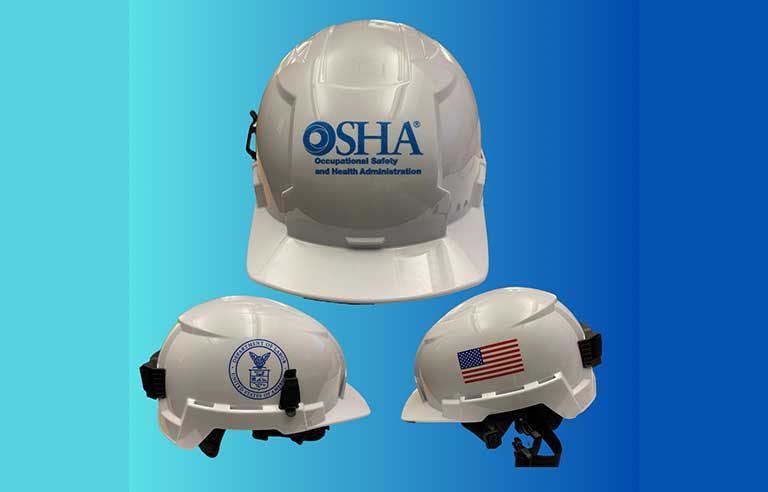OSHA staff switch to safety helmets from hard hats

Photo: OSHA
Washington — OSHA personnel will now wear safety helmets instead of traditional hard hats to “protect them better when they are on inspection sites.”
The agency notes that traditional hard hats have “minimal” side-impact protection and lack chin straps. “Without the straps,” an OSHA press release states, “traditional hard hats can fall off a worker’s head if they slip or trip, leaving them unprotected. In addition, traditional hard hats lacked vents and trapped heat inside.”
A recent safety and health information bulletin provides an overview of other key differences between the two forms of head protection. “Safety helmets incorporate a combination of materials, including lightweight composites, fiberglass and advanced thermoplastics,” it states. The helmets also have the potential to incorporate faceshields or goggles to protect the eyes and face, as well as built-in hearing protection/communication systems for noisy environments.
The agency recommends safety helmets be used by workers:
- In the construction and oil and gas industries.
- In high-temperature, specialized-work and low-risk environments.
- Involved in electrical work or when at height.
- Who are required to do so by regulations or industry standards.
“OSHA wants employers to make safety and health a core value in their workplaces and is committed to doing the same by leading by example and embracing the evolution of head protection,” the release states.
Post a comment to this article
Safety+Health welcomes comments that promote respectful dialogue. Please stay on topic. Comments that contain personal attacks, profanity or abusive language – or those aggressively promoting products or services – will be removed. We reserve the right to determine which comments violate our comment policy. (Anonymous comments are welcome; merely skip the “name” field in the comment box. An email address is required but will not be included with your comment.)

